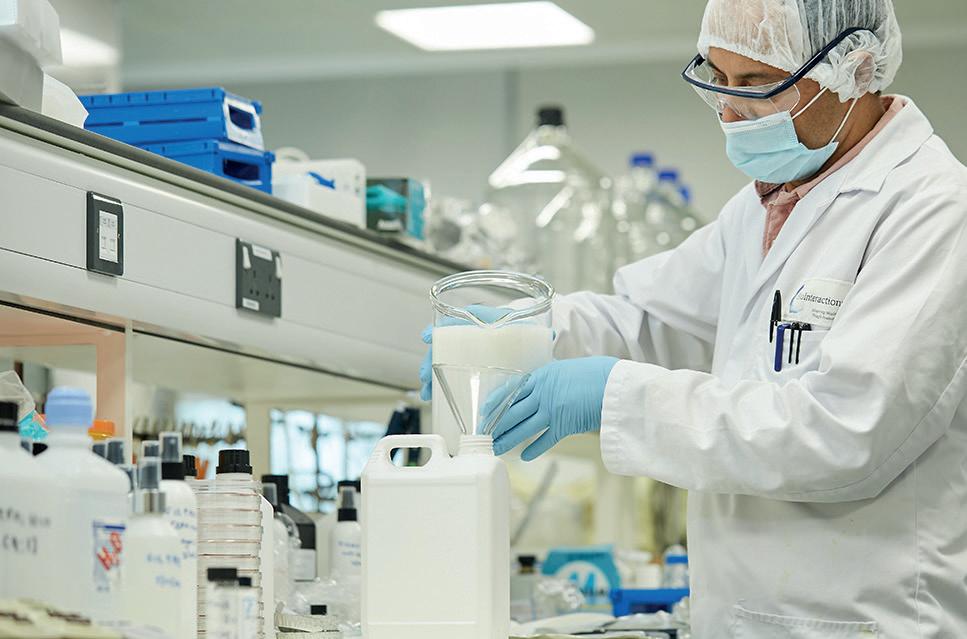
2 minute read
ON THE ROAD WITH Fit the mould
Med-Tech capabilities to address the challenges of heat profiling with mould tools.
Micro Systems has a broad offering when it comes to manufacturing moulds and components in the medical device sector. It was established in 2003 and has been at its headquarters in Golborne, Warrington ever since. The manufacturer also has a facility in Singapore and a sister company called Optimold on its UK site –established in 2010.


“There’s lots of experience in design for manufacture, design for moulding, design for micromoulding as well. There’s experience with different technologies in the moulds such as conformal cooling, servo drivers for closing and unscrewing, various sensors to monitor the fill rate, pressure, and temperature inside the cavities.” majority of its production serving the medical device and diagnostic sectors.
The company’s background sees two directors who had experience prior to 2003 in the development of high precision moulds, plus other senior staff with a combined experience of over 100 years in the sector.



Since its establishment there has been continuous investment in technology including mould-manufacturing capabilities, micro-injection moulding machines, metrology equipment, cleanrooms and staff. Med-Tech Innovation was given a tour of the facility which includes its Class 7 cleanroom with six specialist micro moulding machines, and metrology equipment with the capability of measuring down to less than a nanometre.
Alex Clark, sales & marketing coordinator explained the company can boast some of the top mould designers in the UK, while Micro Systems’ manufacturing capabilities include milling, grinding, cutting as well as moulding and design. Eight years ago the company added conformal technology to its manufacturing
Quality machinery is a significant factor with many other reputable organisations featuring across the company. This includes Siemens NX 3D CAD software for mould design and simulation, Kern Pyramid Micro Milling machines, machinery from the likes of Netstal and Staubli Robotics, as well as metrology equipment from Alicona, Keyence, Bruker and Hexagon. Speaking about the extensive metrology equipment, Clark said: “It’s all well and good having this machinery for manufacturing the steel or producing the components to tight tolerances but if you can’t measure accurately then it doesn’t matter.”
Clark explains that the company worked closely with Wittman Battenfeld during the development of the micro moulding machines supplied at the facility, to test and push the boundaries of what could be achieved with micro moulding.

“We did a lot of development work to figure out what can be achieved on these machines to achieve the control of the process and the injection.”
Though ‘Micro’ features in the name, it’s not just small parts the company makes. Its portfolio includes medical device components, drug delivery systems including injector pens and inhalers, diagnostic products for blood analysis and microfluidic chips. There is considerable experience in the design, manufacture, FAT and validation of multi cavity valve gate high volume injection moulds for the medical, pharmaceutical and ophthalmic markets, with the
“The Singapore facility compliments the UK headquarters nicely, allowing for reduced lead times on manufacture of low cavitation prototype/preproduction moulds. Design lead times can also be reduced, with our colleagues in Singapore essentially having completed a whole working day on a design between the time our UK team leave work in the afternoon and arrive in the office the next morning.”
Speaking about the establishment of Optimold, Clark said: “Micro Systems has been producing ultraprecision medical moulds since 2003, and we quickly found that our customers required validation and often production of components as well. That’s why we set up Optimold, to provide that extra service to our customers.
“We started off with just this little unit and then over the years we've gradually expanded all the way down the business park and then across the road to Optimold.”










